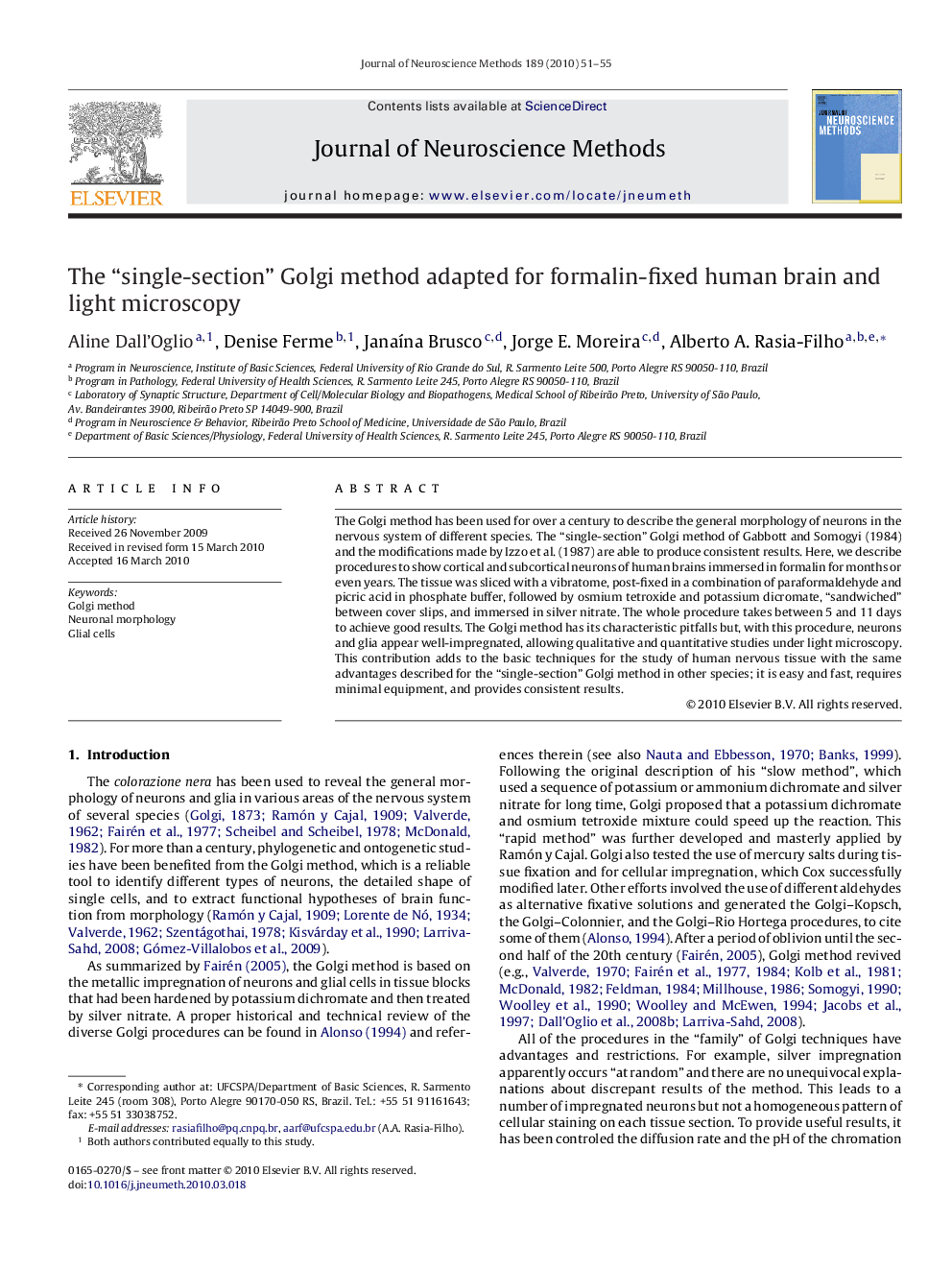| Article ID | Journal | Published Year | Pages | File Type |
|---|---|---|---|---|
| 6270015 | Journal of Neuroscience Methods | 2010 | 5 Pages |
Abstract
The Golgi method has been used for over a century to describe the general morphology of neurons in the nervous system of different species. The “single-section” Golgi method of Gabbott and Somogyi (1984) and the modifications made by Izzo et al. (1987) are able to produce consistent results. Here, we describe procedures to show cortical and subcortical neurons of human brains immersed in formalin for months or even years. The tissue was sliced with a vibratome, post-fixed in a combination of paraformaldehyde and picric acid in phosphate buffer, followed by osmium tetroxide and potassium dicromate, “sandwiched” between cover slips, and immersed in silver nitrate. The whole procedure takes between 5 and 11 days to achieve good results. The Golgi method has its characteristic pitfalls but, with this procedure, neurons and glia appear well-impregnated, allowing qualitative and quantitative studies under light microscopy. This contribution adds to the basic techniques for the study of human nervous tissue with the same advantages described for the “single-section” Golgi method in other species; it is easy and fast, requires minimal equipment, and provides consistent results.
Related Topics
Life Sciences
Neuroscience
Neuroscience (General)
Authors
Aline Dall'Oglio, Denise Ferme, JanaÃna Brusco, Jorge E. Moreira, Alberto A. Rasia-Filho,
